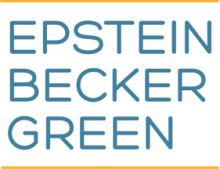It’s July, and the White House Artificial Intelligence (“AI”) Action Plan (“Action Plan” or “the plan”) is almost here.
In Executive Order 14179 of January 23, 2025—entitled “Removing Barriers to American Leadership in Artificial Intelligence”—President Donald Trump directed federal officials to develop an Action Plan to achieve the policies of sustaining and enhancing America’s dominance in global AI. The plan is expected to drop by July 23, to coincide with an address by the President outlining his vision for American AI.
The release of the Action Plan will follow a number of recent developments in AI at the state and federal levels that show no signs of abating. On July 15, for instance, the White House announced $90 billion in energy and data center investments in Pennsylvania, according to Reuters. Bloomberg reported the same day that President Trump is planning to sign another executive order to implement the Action Plan upon its release to push the policy forward.
‘Maintaining American Leadership’
As we’ve noted previously, Trump was the first president to issue an executive order on AI—No. 13859 of February 11, 2019, “Maintaining American Leadership in Artificial Intelligence” (“E.O. 13859”). E.O. 13859 announced a U.S. policy “to sustain and enhance the scientific, technological, and economic leadership position of the United States in AI R&D and deployment,” setting forth six strategic objectives in furtherance of both promoting and protecting American investments in AI:
- Promoting sustained investment in AI research and development in collaboration with industry, academia, international partners and allies, and other non-federal entities;
- Enhancing access to high-quality and fully traceable federal data, models, and computing resources;
- Reducing barriers to the use of AI technologies;
- Ensuring that technical standards minimize vulnerability to attacks from malicious actors and reflect federal priorities for innovation, public trust, and public confidence in systems that use AI technologies, and develop international standards to promote and protect those priorities;
- Training American AI researchers and users; and
- Developing and implementing an action plan.
In the early days of the second Trump Administration, the president issued E.O. 14179, establishing a policy of American “global AI dominance in order to promote human flourishing, economic competitiveness, and national security.”
To that end, E.O. 14179 calls for the submission to the president of an action plan within 180 days (July 22, 2025)—to be developed by the assistant to the president for Science and Technology, the special advisor for AI and Crypto, and the assistant to the president for National Security Affairs, along with the assistant to the president for Domestic Policy, the director of the Office of Management and Budget (“OMB”), and relevant heads of executive departments and agencies.
Developments since the issuance of E.O. 14179 include:
- in late February, the White House issued a Request for Information seeking public comment on policy ideas for the AI Action Plan (see EBG blog post); and
- by late April, the Office of Science and Technology Policy (“OSTP”) reported that more than 10,000 public comments had been received from interested parties including academia, industry groups, private sector organizations, and state, local, and tribal governments.
“The huge volume of public comments we received reflects the deep interest Americans have in the future of AI and highlights the critical importance of the Trump Administration’s AI Action Plan for advancing this generation’s defining emerging technology,” Michael Kratsios, assistant to the president and director of OSTP, stated at the time.
‘Removing Barriers’
The White House is especially keen on removing barriers to AI innovation, particularly those it views as being implemented by its predecessors. Actions in the first half of 2025 include:
- Executive Order No. 14148 of January 20, 2025,“Initial Recissions of Harmful Executive Orders and Actions,” which explicitly revoked President Biden’s Executive Order 14110 of October 30, 2023, “Safe, Secure, and Trustworthy Development and Use of Artificial Intelligence (“the Biden EO”);
- It is worth noting that while this EO revoked the Biden EO on AI, deliverables that grew out of Biden EO and were promulgated through rulemaking—for example, the Health Data, Technology, and Interoperability Rule (HTI-1 Rule) of January 9, 2024—were not rescinded by the EO and would need proper regulatory action to be revoked.
- The HTI-1 Rule included federal regulations for improved algorithm transparency with first-of-its-kind federal requirements for AI and machine learning-based predictive software in health care (see EBG’s Diagnosing Healthcare podcast of October 31, 2024).
- In January 2025, the president and leaders of three tech firms announced the creation of a new company, Stargate, to grow AI infrastructure in the United States, with the investment approaching $500 billion.
- In April, a pair of OMB memos set forth AI policy regarding the use and procurement of AI by the federal government (see EBG’s blog post).
The Legislative Landscape
Meanwhile, the federal and state landscape with respect to AI continues in a state of flux. The proposed moratorium in the House Reconciliation Bill (H.R.1) made plenty of headlines in recent months before its ultimate demise. The key provision stated that “no State or political subdivision thereof may enforce, during the 10-year period beginning on the date of the enactment of this Act, any law or regulation of that State or a political subdivision thereof limiting, restricting, or otherwise regulating artificial intelligence models, artificial intelligence systems, or automated decision systems”—except that the provision may not be construed to prohibit the enforcement of any law or regulation that “remove[s] legal impediments to, or facilitate[s] the deployment or operation of,” an AI model or system or an automated decision making system, etc.
On July 1, 2025, the U.S. Senate voted 99 to one in favor of removing the moratorium from the bill that passed later that day. Some predict its return in future legislation. HB 1 in its final form devotes funds for the application of AI to defense initiatives, transformational AI models for the Department of Energy, and technological solutions for rural hospitals.
Meanwhile, states continue to legislate AI utilization. While many state AI bills failed during their respective 2025 legislative sessions, successful omnibus and tailored state laws governing health care and life sciences and the workplace abound, including:
- the Texas Responsible Artificial Intelligence Act (TRAIGA), effective January 1, 2026, prohibits, among other things, child exploitation related to deepfakes and pornography, certain government use of certain biometric data, unlawful discrimination, and government use of AI for social scoring (see EBG’s blog post);
- Utah’s HB 452, effective May 7, 2025, prohibits suppliers of “mental health chatbots” from sharing user information with third parties, and prohibits such chatbots from advertising products or services (see EBG’s blog post);
- Colorado’s historic comprehensive AI law, effective February 1, 2026, also survived attempts to limit its scope through amendment (see EBG’s blog post);
- Illinois’s Ins-Adverse Determination Act, effective January 1, 2025, which ensures transparency in prior authorization programs;
- California’s Physicians Make Decisions Act, effective January 1, 2025, which requires human oversight of utilization decisions made by AI tools;
- California’s recently approved Modification to Employment Regulations Regarding Automated-Decision Systems, which will become effective October 1, 2025;
- Maryland’s HB 820, effective October 1, 2025, which requires AI tools to base utilization decisions on an individual’s clinical background (rather than solely on group datasets);
- Oregon’s HB 2748, effective January 1, 2026, which states that a “nonhuman entity,” including AI, may not use call itself a registered nurse or any other type of nurse.








 />i
/>i
